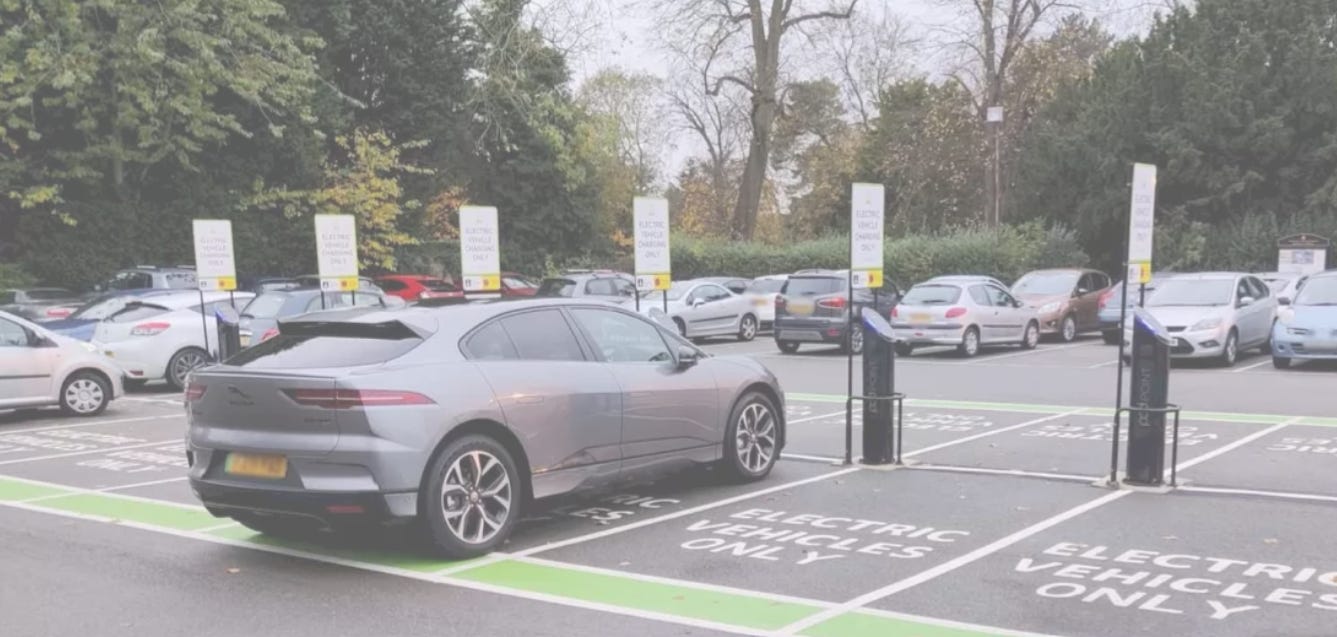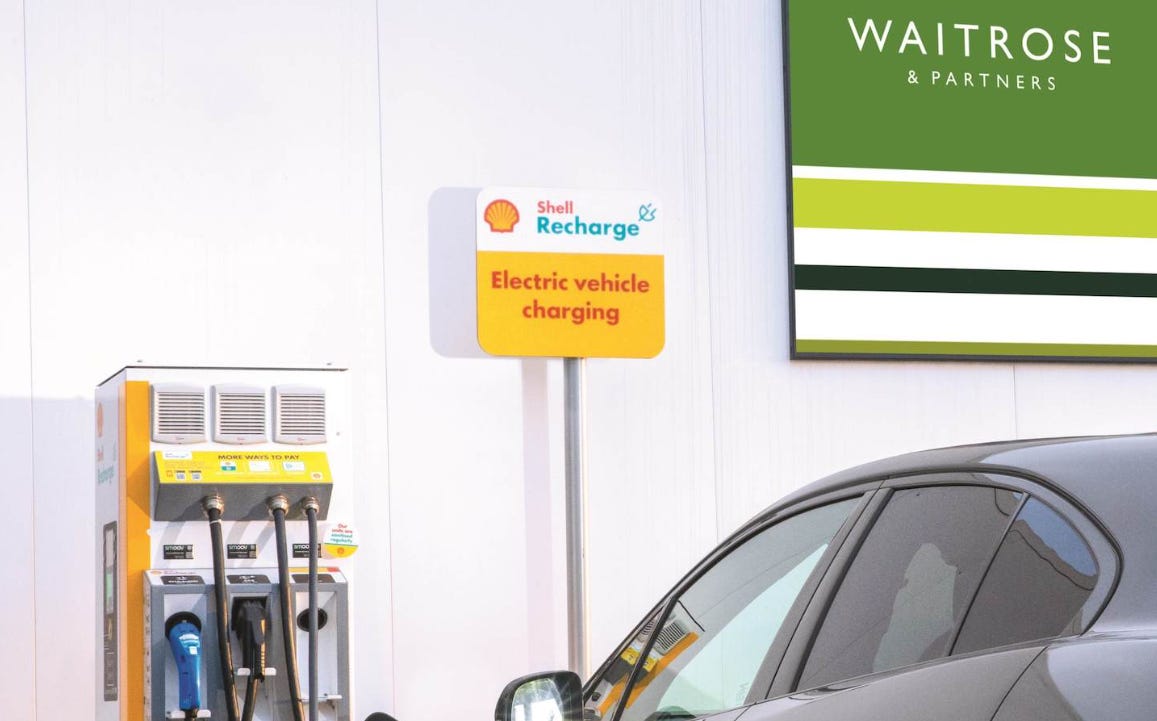Convenient EV Charging
Do you charge your car while shopping?
The rise of electric vehicles has heralded a new era in transportation. As the world grapples with the urgent need to combat climate change, and most people just want to breathe cleaner air, EV’s offer a promising solution to reduce carbon emissions.
However, as with any technological shift, there are new habits and practices to adopt. One such practice revolves around charging. Should you wait for your EV's battery to run low before charging it fully, or should you top it up whenever you get a chance? This article delves deep into the advantages of the latter, using the example of shopping.
Understanding EV Batteries: The Basics
Before diving into the debate, it's crucial to understand the mechanics of EV batteries. Most EV’s use lithium-ion batteries, which differ significantly from the batteries in conventional vehicles. These batteries have specific charging needs and behaviors.
Lithium-ion Dynamics: Unlike traditional batteries, lithium-ion batteries don't suffer from the 'memory effect'. This means they don't need to be fully discharged before recharging. In fact, they thrive on frequent, partial charges.
The Golden Range: Keeping a lithium-ion battery between 20% and 80% of its capacity can extend its lifespan. This range is often referred to as the 'golden range' and is the sweet spot for battery health.
Let’s jump in.
1. The Convenience Factor: Making the Most of Your Time
Seamless Integration into Daily Life: Charging your EV doesn't have to be a separate task on your to-do list. By plugging in your vehicle while shopping, you're integrating charging into your daily routine. This ensures you always have enough charge without making special trips to charging stations.
Rapid Charging Technology: Many shopping centers now offer rapid chargers, which can provide a significant battery boost in a short amount of time. A 30-minute shopping trip can add miles to your range, ensuring you're always ready to go.
2. Combating "Range Anxiety" with Smart Charging Habits
Unexpected Journeys: Life is unpredictable. You might have to make an unplanned trip or face detours due to roadworks. By maintaining a healthy charge, you're always prepared for the unexpected.
Weather Conditions: Cold weather can reduce an EV's range. Charging while shopping, especially during winter, ensures that you have that extra buffer to combat any weather-related battery drain.
3. Economic Benefits: Saving Money with Off-Peak Rates and Loyalty Programs
Off-Peak Charging: Many EV charging stations offer reduced rates during off-peak hours. If you shop during these times, you can save significantly on charging costs.
Loyalty Programs: Some retailers offer loyalty points or discounts for using their EV charging facilities. Over time, these benefits can add up, leading to substantial savings.
4. Supporting Green Initiatives: Voting with Your Wallet
Promoting Sustainable Businesses: By choosing to shop at stores that offer EV charging, you're supporting businesses that invest in sustainability. This encourages more businesses to follow suit.
Reducing Carbon Footprint: Every time you charge your EV instead of refueling a petrol or diesel car, you're reducing your carbon footprint. By charging while shopping, you're maximizing this positive impact.
5. The UK's Pioneering Role in Promoting EV Charging at Retail Outlets
Tesco's Initiative: Tesco, in collaboration with Volkswagen and Pod Point, has embarked on an ambitious project to install EV charging points at 600 of its stores. This initiative not only serves Tesco's customers but also sets a precedent for other retailers.
IKEA's Green Vision: Beyond selling sustainable products, IKEA has taken tangible steps to promote green transportation. Almost all IKEA stores in the UK offer EV charging, making it convenient for customers to charge while they shop.
Waitrose and Rapid Charging: Recognizing the need for speed, many Waitrose supermarkets have equipped their parking lots with rapid chargers. These chargers can rejuvenate an EV's battery in just 30 minutes, perfect for a quick shopping trip.
The Case for Charging While Shopping
Pros:
1. Optimal Battery Health: As mentioned, frequent charging can keep the battery within the golden range, promoting longevity and consistent performance.
2. Time Efficiency: Charging while shopping is a classic example of multitasking. Instead of setting aside specific times to charge, you can integrate it into your daily routine, ensuring your EV is always ready for the road.
3. Economic Benefits: Many shopping centers offer reduced charging rates during off-peak hours. Additionally, retailers might provide loyalty points or discounts to customers using their charging facilities.
4. Combatting Range Anxiety: By maintaining a healthy charge, you're always prepared for unexpected trips or detours, reducing the fear of running out of battery.
5. Supporting Green Initiatives: Charging at stores that offer EV facilities promotes businesses investing in sustainability, pushing more establishments to consider green initiatives.
Cons:
1. Limited Charging Stations: While the number of EV charging stations at shopping centers is growing, there's still a limited number compared to traditional parking spaces. This can lead to waiting times, especially during peak hours.
2. Slower Charging Speeds: Not all shopping centers are equipped with rapid chargers. Standard chargers can take longer, meaning you might not get a significant charge during a short shopping trip.
3. Potential Costs: While some retailers offer free charging as a perk, others might charge a premium, especially if they've partnered with third-party charging networks.
Balancing the Pros and Cons: Making an Informed Decision
While the benefits of charging while shopping are evident, it's essential to consider the potential drawbacks. Here are some strategies to maximize the advantages:
1. Plan Ahead: Before heading out, check the availability of charging stations at your shopping destination. Apps like Zap-Map can provide real-time data on charger availability and type.
2. Off-Peak Shopping: If possible, shop during off-peak hours. Not only can you benefit from reduced charging rates, but you'll also avoid potential waiting times.
3. Diversify Charging Habits: While shopping centers are a convenient charging option, consider diversifying your charging spots. Workplace charging, home charging, and dedicated EV charging stations can complement your shopping center charges.
Conclusion
The transition to EV’s is not just about adopting a new mode of transportation; it's about embracing a new lifestyle. Charging while shopping offers numerous benefits, but it's essential to approach it with a balanced perspective. By understanding the pros and cons and strategizing accordingly, you can ensure that your EV charging habits align with your needs, promoting optimal battery health, convenience, and sustainability.




🤣🤣